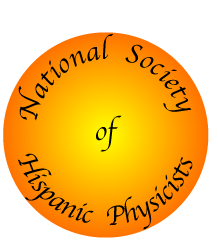Juan R. Burciaga
physicist and physics educator
Favorite Activities: banging things together to see what happens, taking things apart to see why they work, building things with blocks and stuff
B.S., Univ. of Texas at Arlington, 1975
M.A., Univ. of Texas at Arlington, 1977
Ph.D., Texas A&M University, 1986
“In many ways, I think of myself as a two-year old passing as an adult.”
Bienvenidos/Welcome
Teaching Philosophy and Experience
I have been lucky enough to teach at strong, liberal arts colleges that place a strong emphasis on excellence in teaching and the participation of undergraduates in research. I started Austin College but the most recent colleges I have worked at include Mount Holyoke College, Bowdoin College and Colorado College. In addition to physics, I have also taught astronomy, mathematics and chemistry.
I am very interested in helping students more effectively learn physics and astronomy. My work in this area has led me to adopt a non-teaching style in the classroom where students are very active in teaching themselves. We frequently use group discussions, in-class experiments, and computer simulations to keep things moving.
I enjoy teaching both intro courses and advanced theoretical-based physics courses. But I also enjoy experimental work where I have a zillion pieces in front of me and no instructions.
In addition to the scholarship of teaching and learning, I have also pursued the scholarship of diversity and inclusion.
Research and Scholarship
I have always taught my classes with a reflective turn of mind. And so early on I became aware of the questions that invariably occur in the teaching/learning environment. Questions of student learning, classroom community, and faculty development. I found that I could pursue these questions with the same passion, discipline and rigor of my physics scholarship and I was drawn to the scholarship of teaching and learning(SOTL). The rapidly maturing discipline of Physics Education Research added to my ability to pursue questions of pedagogical theory and curricular design. One of my present foci is on the application of play theory to pedagogical design (particularly textbooks). Anothe ris rethinking of the course on introductory physics for life sciences (IPLS). In addition, I am pursuing a long-standing research program in using astronomy to allow non-science majors to experience the critical inquiry and analysis used in the development of a scientific discipline. More background can be found on my PER/SOTL page (under construction).
My physics research interests are varied but center around atomic physics and astronomy. My masters thesis at the University of Texas at Arlington was based on positron-atom scattering and my doctorial work at Texas A&M was studying how rapidly hydrogen molecules photodissociated into their component atoms.
I enjoy working with students on projects. Sometimes we will work on some of my interests, either in computational molecular physics or in physics pedagogy and curriculum development. But there are other time we will work in areas where I have little experience but the student has a great deal of enthusiasm for the project, such as building a robot or studying general relativity.
Why go into physics?
Passion and wonder.
The universe is filled with beauty, mystery and unexpected delights. From the puzzling quantum world of the very small to the majestic motion of galaxies; from the wonderland world of the very fast to the almost motionless world of the very cold; from a single atom trapped in a well to the uncountable number of stars in the universe; from the beginning of time to the unfathomable future — all of the physical universe is the realm of physicists.
Many people think of physicists as formal, stiff and overly-analytical. But what drives us is our passion to understand the universe and our delight in the wonder we see.
Organizations
I think of myself as a physicist and as an educator. Most of my work in organizations has been with the American Association of Physics Teachers and the National Society of Hispanic Physicists.
I have represented AAPT or NSHP on several task forces studying issues of diversity, policies of tenure and reappointment, and guidelines for the undergraduate curriculum.
I belong to several other physics and astronomy organizations, including SACNAS and APS, but my lack of time usually permits me only to pay dues.
